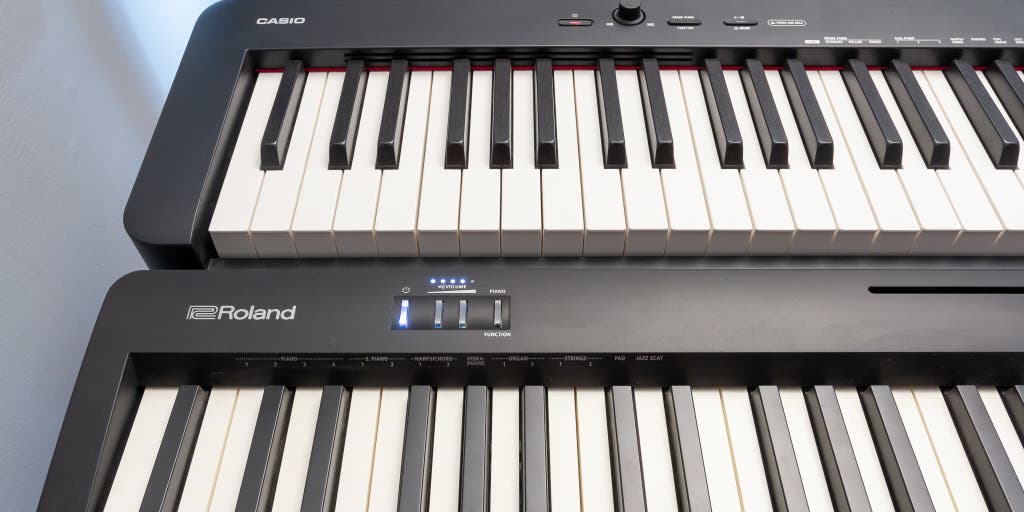1. Introduction
The Roland RD-88 digital piano is an incredibly versatile instrument that can be used by both novice and experienced musicians alike. It has a range of features and benefits that make it an ideal choice for any level of player. From its 88 weighted keys to its built-in speakers, the RD-88 offers a great way to learn, practice and perform on the piano. In this article, we will discuss the features, benefits and tips for getting started with the Roland RD-88 digital piano.
2. Overview of the Roland RD-88 Digital Piano
The Roland RD-88 digital piano is a full-size 88-key keyboard with weighted keys and an intuitive control panel. It also features two built-in speakers, allowing you to play without headphones or external speakers. The RD-88 also has a range of other features including dual headphone jacks, USB connectivity and a range of voices and sounds.
3. Features of the Roland RD-88 Digital Piano
The Roland RD-88 digital piano has a range of features that make it an ideal choice for any musician. These include:
• 88 weighted keys – The RD-88 has 88 weighted keys which provide a realistic feel when playing.
• Built-in speakers – The built-in speakers allow you to play without needing headphones or external speakers.
• Dual headphone jacks – This allows two people to listen at once, making it perfect for duets or practice sessions.
• USB connectivity – This allows you to connect your mobile devices to the RD-88 so you can easily transfer data or use apps such as GarageBand.
• Range of voices and sounds – The RD-88 has a range of voices and sounds that can be used in your performances or recordings.
4. Benefits of the Roland RD-88 Digital Piano
The Roland RD-88 digital piano is an incredibly versatile instrument that can be used by both novice and experienced musicians alike. Here are some of the benefits that it offers:
• Easy to learn – The RD-88’s intuitive control panel makes it easy to learn how to use the instrument, even for those who are new to playing the piano.
• Portable – Despite its full size, the RD-88 is still relatively portable so you can take it with you wherever you go.
• Great sound quality – The built in speakers provide great sound quality so you don’t need to worry about buying external speakers or headphones.
• Range of voices and sounds – With its range of voices and sounds, you can create unique performances or recordings with ease.
5. Tips for Getting Started with the Roland RD-88 Digital Piano
If you’re just getting started with the Roland RD-88 digital piano, here are some tips that will help you get off to a great start:
• Read the manual – Before starting out, take some time to read through the manual so that you understand all of the features and functions available on your instrument.
• Start slow – Don’t try to rush into playing complex pieces right away; take your time to get familiar with how your instrument works first before attempting more difficult pieces.
• Practice regularly – Make sure that you practice regularly so that your skills improve over time; even just 10 minutes each day will make a big difference!
6. How to Connect Your Mobile Devices to the Roland RD-88 Digital Piano
Connecting your mobile devices such as smartphones or tablets is easy with the Roland RD-88 digital piano thanks to its USB connectivity feature. All you need is a USB cable (which should come included with your instrument) and then simply plug one end into your device and then plug the other end into one of the two USB ports on your keyboard (one located on either side). Once connected, you’ll be able to transfer data between your device and keyboard easily as well as use apps such as GarageBand with ease!
7. How to Use MIDI Controllers with the Roland RD-88 Digital Piano
MIDI controllers are great tools for adding extra expression and control when playing your instrument; they allow you to add effects such as vibrato or delay as well as control parameters such as volume or pitch bend without having to reach over to adjust knobs or buttons on your keyboard itself. To use MIDI controllers with yourRD – 88 , allyou need isa MIDI cable (which should come included)and then simply plug one end into your controllerand then plugthe other endinto oneofthe twoMIDI ports onyour keyboard (one locatedon either side). Once connected,you’ll be ableto useyour controllersto manipulate parametersonyour keyboardwith ease!
8 . Howto Record Audio withtheRolandRD – 88 DigitalPiano
Recording audio withtheRolandRD – 88 digitalpiano iseasy thanks totwo lineoutjacks locatedon eithersideofyour instrument . Allyouneedisalinecable (whichshouldcome included)andthensimply plugoneendintoyour recording deviceandplugthe otherendinto oneofthetwolineoutjacks . Onceconnected ,you’ll beabletorecord audio fromyourRD – 88 directlytoyour recording deviceforlateruse .
TheRolandRD – 88 digitalpianois anincrediblyversatileinstrumentthatcanbeusedbybothnoviceandexperiencedmusiciansalike . Withitsrangeoffeaturesandbenefits ,itmakesanidealchoiceforanylevelofplayer . Fromitsweightedkeys tobuiltinspeakers ,theRD – 88offersagreatwaytolearn ,practiceandperformonthepiano . WehopethisarticlehashelpedyougetstartedwiththeRolandRD – 88digitalpiano !
Q : Isitdifficulttolearnhowtouse ? A :No ,theRD – 88hasanintuitivecontrolpanelthatmakesiteasytolearnhowtouseevenfornovices . Q :Doesithavebuiltinspeakers ? A : Yes ,itdoeshavebuiltinspeakerssoyoucanplaywithoutneedingheadphonesorexternalspeakers . Q : Isitportable ? A : Yes ,despitethefullsize ,theRD – 88isstillrelativelyportablesoyoucantakeitwithyouwhereveryougo .
1 . OfficialwebsiteoftheRolandRD – 88digitalpiano :https://www . roland . com/us/products/rd – 88/ 2 . YouTubeTutorialsonusingtheRolandRD – 88digitalpiano :https://www . youtube . com/results?search_query=roland+rd+ – +88 3 . OnlineforumsdedicatedtotheRolandRD – 88digitalpiano :https://www . gearslutz . com/board/electronicmusicinstrumentsandsamplers/1013519 – roland rd

